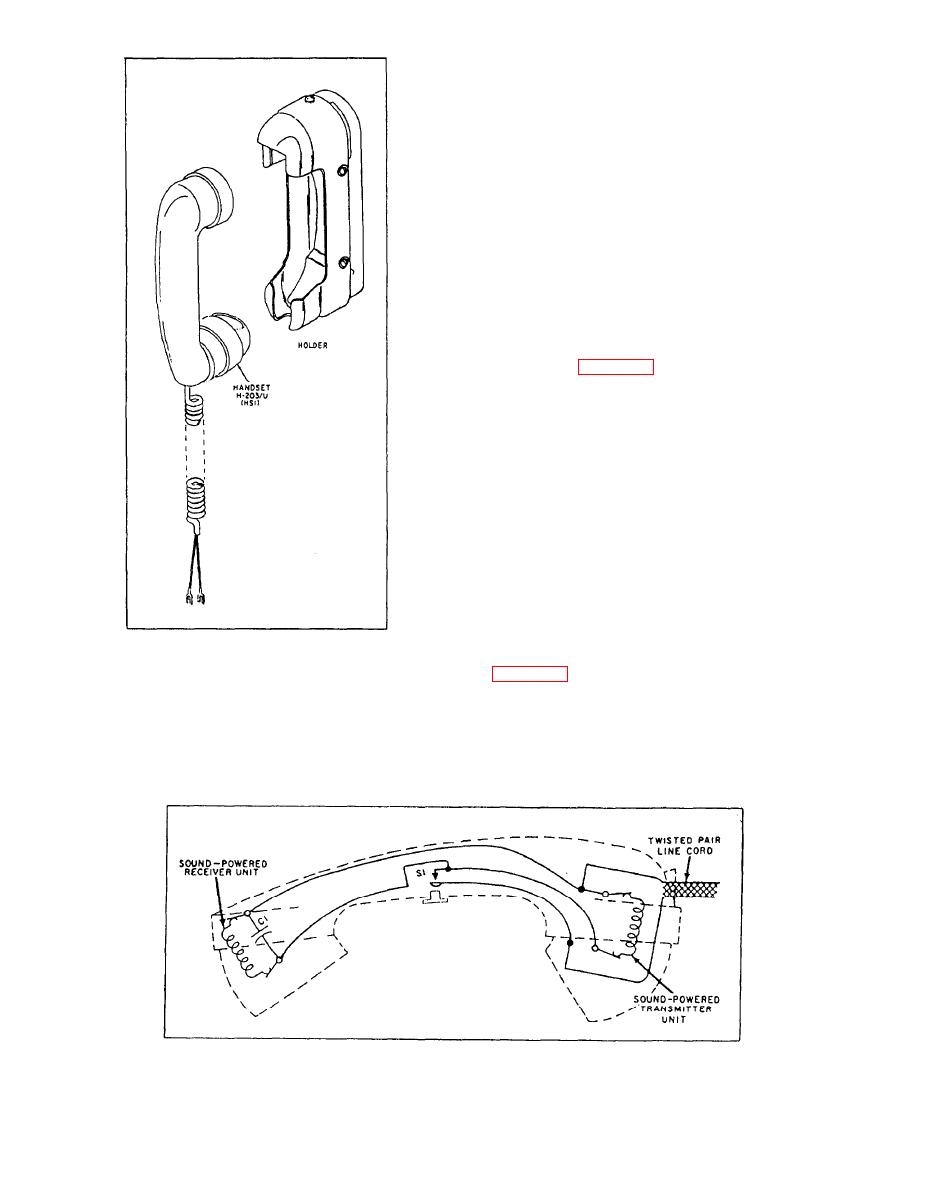 |
|||
|
Page Title:
Figure 5-7.--Wiring diagram of the H-203/U sound-powered telephone handset. |
|
||
| ||||||||||
|
|
 power is not required. The sound waves produced by the
transmitter's (talker's) voice is the only energy
necessary for the reproduction of the voice at the
receiver's telephone. The acoustic energy of the talker's
voice is converted into electrical energy in the
sound-powered telephone transmitter unit and
transmitted, via connecting wires, to the receiving
sound-powered telephone. The receiving sound-
powered telephone receiver unit reconverts the
electrical energy into acoustic energy. The types of
sound-powered telephones used in the sound-powered
system are the handset and the headset-chestset.
Sound-Powered Handsets
Sound-powered telephone handsets are designed
for general use on a line with other handsets or
headset-chestsets. Figure 5-6 is an illustration of a type
H-203/U sound-powered telephone handset and handset
holder. This type of handset has a nonkinking retractable
cord. Another type of handset is the H-203/U
(modified). This handset is identical to the type H-203/U
except that the handset cord is straight and contains no
less than two conductors in a single shield. The H-203/U
(modified) is modified to meet security requirements of
the ship's communication center.
Sound-powered handsets are hard-wired into
sound-powered jackboxes, selector switches, and
magneto call stations. For stowage of the handsets,
handset holders are installed in enclosed spaces, and
handset stowage cabinets are installed at stations
exposed to the weather.
and handset holder.
sound-powered telephone handset. The nonlocking,
SOUND-POWERED TELEPHONE
normally open, spring return, push switch, S1,
HANDSETS AND HEADSET-CHESTSETS
disconnects the sound-powered transmitter and receiver
The sound-powered telephone system is
units from the line in the open position, and connects the
comparatively reliable because external electrical
units to the line in the closed (depressed) position.
|
|
Privacy Statement - Press Release - Copyright Information. - Contact Us |